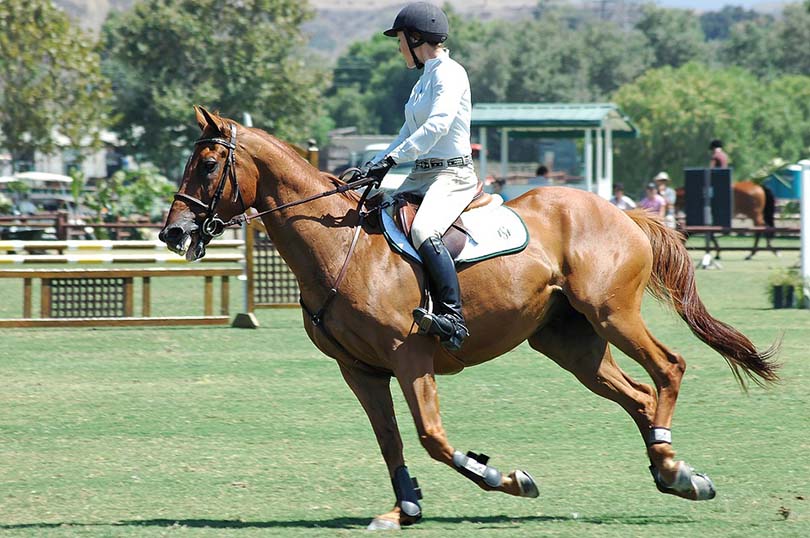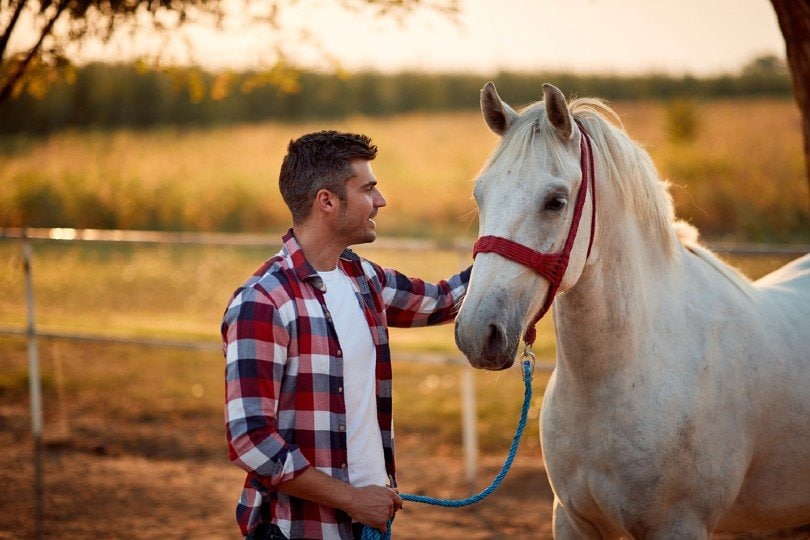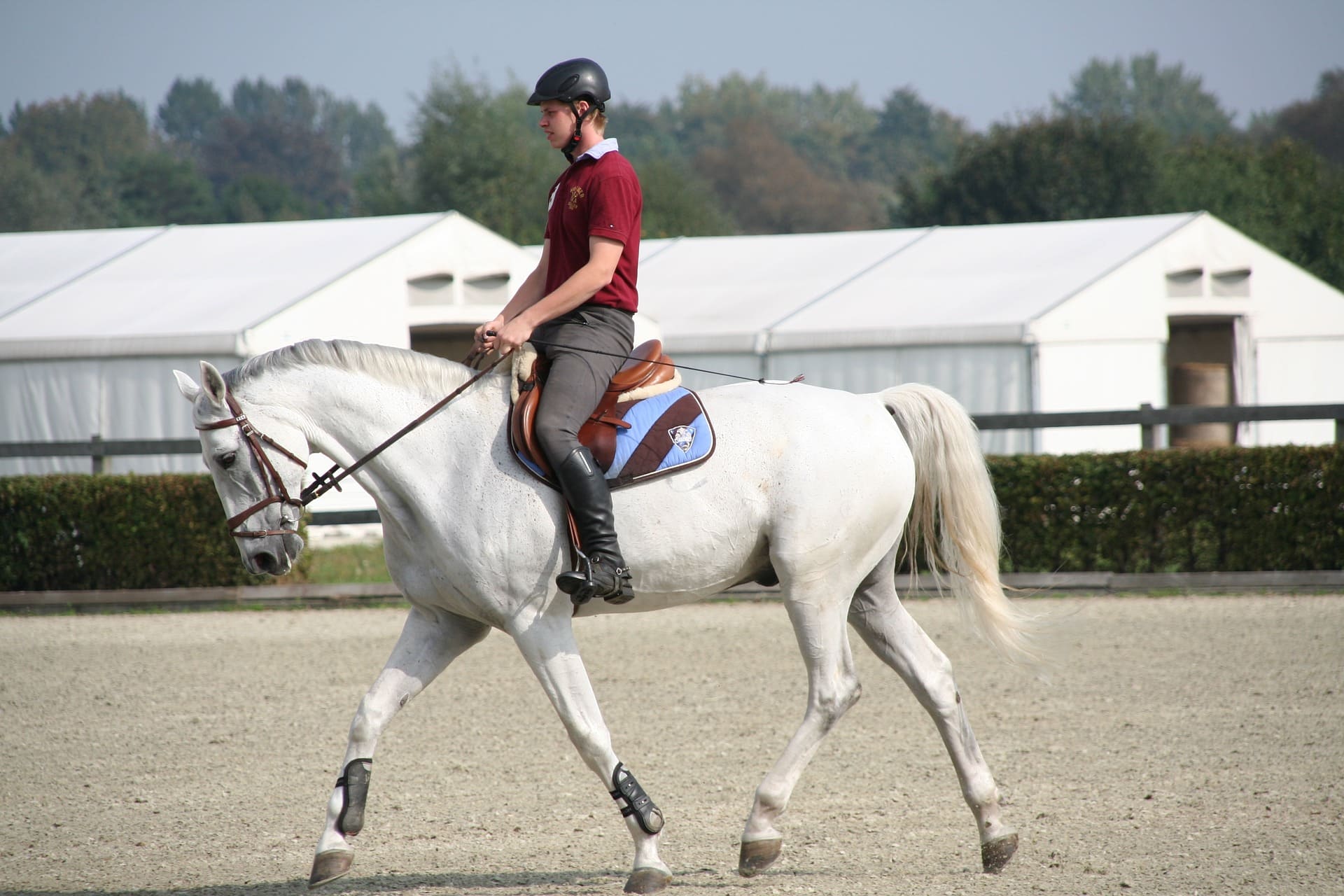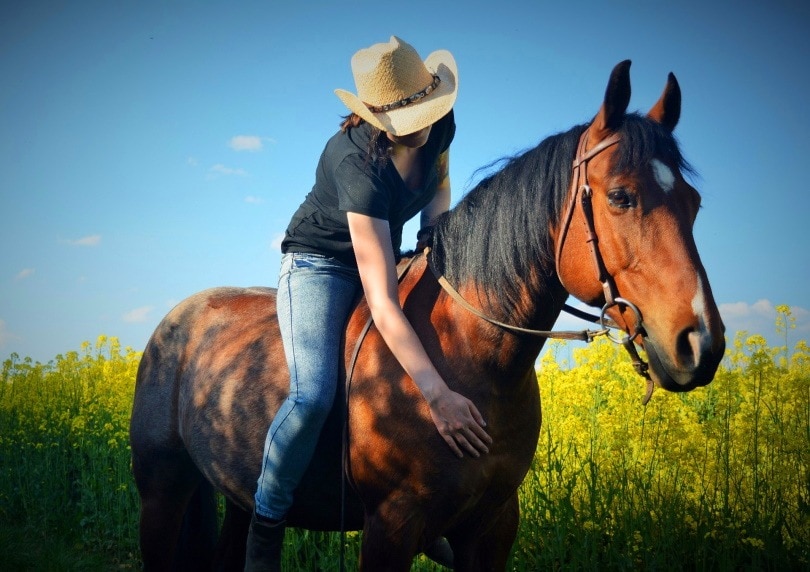
Neck reining is the traditional western way to steer horses. Instead of direct reining or plow reining, which use two hands, the reins rest on your horse’s neck. This method of reining enables you to steer your horse one-handed while leaving your other hand free to rope, open and close gates, or even swing a polo club.
How do you teach your horse to neck rein? First, your horse needs to be broke before you teach them to neck rein. By broke, we mean that they should know how to direct rein and respond to your leg and seat cues. Teaching your horse to neck rein if they don’t know how to respond properly to a bit or haven’t learned to respond to your seat isn’t a good idea. You should back up your training to give them a good foundation before moving on to more advanced training techniques.
Assuming that your horse already knows these things, let’s outline the steps to teaching your horse to neck rein.
The 6 Steps to Teach a Horse to Neck Rein
1. Understand the mechanics of neck reining and how your horse should respond to your cues
Before you teach your horse to neck rein, you need to understand how it works and what is required from you as a rider to communicate effectively with your horse. Fortunately, neck reining is fairly straightforward. You are using leg pressure and laying the reins on your horse’s neck to communicate.
Using Your Reins to Communicate
There is an important difference between direct reining and neck reining. When you neck rein, you’re not applying pressure to the bit but laying your rein on the neck on the side that you want your horse to move away from.
If you want to go right, lay the rein on the left side of your horse’s neck. Whichever hand holds the rein will cross over their neck to apply pressure. Essentially, they will move in the direction that you want your horse to turn
Don’t pull your horse in that direction. It’s tempting when your horse doesn’t respond correctly to do so, but it won’t teach them the proper response. If you pull on the bit, you’re not neck reining. Neck reining requires a response from light pressure on the neck.
Using Your Legs to Communicate
When you are neck reining, you also want to use leg pressure to communicate with your horse. This will signal your horse to move in the right direction. When you are direct reining, you “open the door” with your rein hand in the direction that you want to turn. Then, you “push your horse through the door” with your outside leg (or the one farthest from the imaginary door).
With neck reining, the rein and leg cue come from the same side. Lay the outside rein on the neck, and push with the outside leg. It creates a boundary that encourages your horse to move away from the pressure.

2. Teach your horse the correct response
Horses respond by pressure and release. This is how they learn that they’ve found the right answer to your cue.
In the beginning, start from a standstill. Apply your rein and leg cue, and ask your horse to move forward. When your horse turns in the direction that you asked (even if it’s only one step), release your aids and reward the response.
If your horse doesn’t respond the first time correctly, that’s okay. Turn a circle, stop, and cue again. Tight circles are read as extended pressure, so your horse will understand that they didn’t provide the correct answer.
3. Use neck reining cues in your riding.
Once your horse knows the correct response, start neck reining during your everyday riding. It can take months to master a new response, so be patient.

4. Know that repetition is key
The fastest way to teach your horse to neck rein is to do it regularly. The more your horse does it, the better they get at it. Even if you aren’t riding for the purpose of training neck reining, incorporate it into your ride. Even when your horse isn’t getting it, keep going.
5. Gradually rely more on neck reining cues
Advance the frequency that you are neck reining as your horse gets better at it. Only increase your expectations as your horse gets better. Correct mistakes as you go and keep at it.

6. Have fun and challenge your horse
Just like us, horses learn better when they’re enjoying the process. Obstacle courses and patterns can help avoid boredom and frustration. Here are a few patterns that are excellent for teaching your horse to neck rein:
Final Thoughts
Teaching your horse to neck rein can be a fun exercise for you and your horse, but it’s also a useful skill in your arsenal. Take your time and enjoy the process. Learning new skills should be fun!
See Also:
- How Many Horses Are There? (US & Worldwide Statistics)
- Do Horses See Colors? Are They Color Blind? (Facts, & FAQ)
Featured Image Credit: clarencealford, Pixabay







